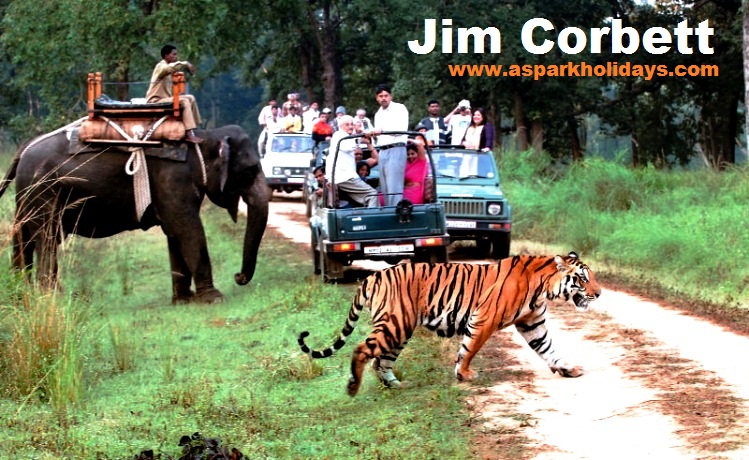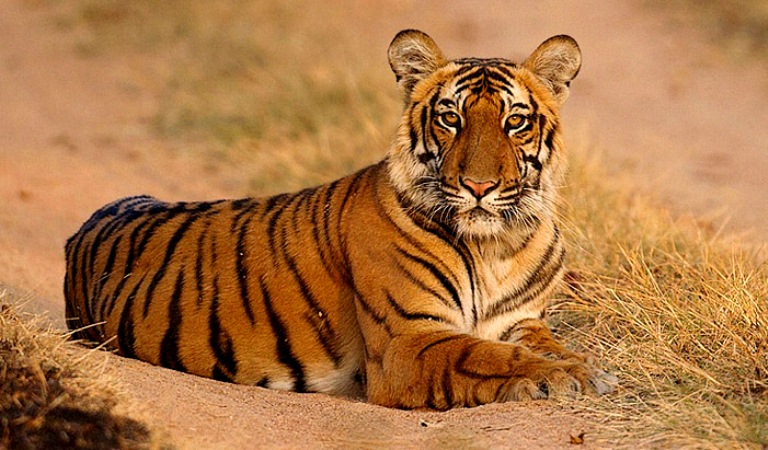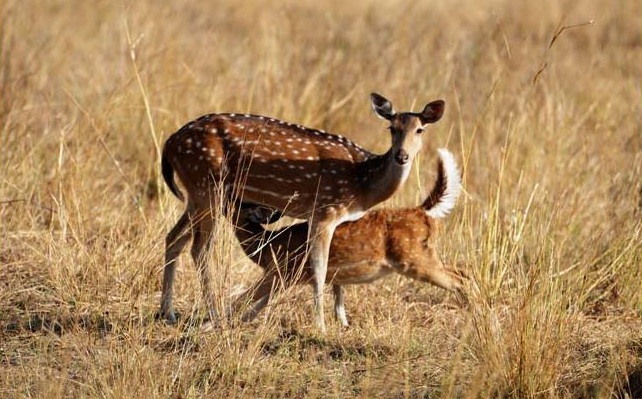
Brief History of Jim Corbett National Park:- Being the oldest national park in India the Corbett National Park holds a vast and gripping history that dilates the princely state of Tehri Garhwal. The British, after evicting the Boksas tribe in the early 1860s, embarked on preserving the forest against cultivation and cattle farming. Later in 1879 the forests were constituted into a Reserve Forest and in the early 1900s the idea of setting up a national park on the territory was fed back. The process of setting the boundary was led by Sir Jim Corbett in the year 1936 and a part was named as Hailey National Park, covering an area of 323.75 sq kms boasting Asia first national park and one of the tiger reserves. After the independence the park was renamed as Ramganga National Park and there again the name Corbett National Park was assigned in the period 1955-56. In 1974 the rich and wild ecosphere was picked out as a location for launching Project Tiger. Later in the 20th century the process of demarcation was initialized, owing to Corbett Tiger Reserve, by adding the entire Kalagarh forest division that also includes the area of Sonanadi Wildlife Sanctuary. Today the Jim Corbett National Park comprises an area of 1,318.54 square kilometres including 520 square kilometres of core area and 797.72 square kilometres of buffer area and is one of the thirteen protected areas covered by World Wildlife Fund under their Terai Arc Landscape Program.
Geography:- The Jim Corbett National Park comprises of numerous ravines, ridges, minor streams and small plateaus secluded within the Lesser Himalaya and Shivalik. It exhibits a vast ecosphere that is bedded with moist deciduous forest and subtropical pine forest securing several and rare species of plant life. The territory being set on the foot of the Himalaya dwells with a chilling winter but the summers are generally hot and dry.
Fauna:- The Corbett National Park is an abode to several endangered species. Leopards are easily spotted whereas the Corbett Tiger Reserve also houses Bengal Tigers, which lies in wait. Nonetheless barking deer, sambar deer, hog deer and chital, Sloth and Himalayan black bears, Indian grey mongoose, otters, yellow-throated martens, Himalayan goral, Indian pangolins, and langur and Rhesus macaques are quite often spotted. The park also includes several species of cats like the jungle cat, fishing cat and leopard cat. One of the major attractions is the Indian python and the park is also a haven to several species of birds like the crested serpent eagle, blossom-headed parakeet and the red jungle fowl. Further there are more than 500 species of birds, 33 species of reptiles, seven species of amphibians, seven species of fish and 36 species of dragonflies that makes it a WILD DEN to the WHIZZ WILDERS (travelers onto jungle safaris).
Flora:- Corbett is just not a wildlife sanctuary but is also an ideal place to familiarize with several species of plant life. It is an absolute haven to nature lovers and the whispering ambiance simple makes it an ideal destination for wildlife photography. The forest ranges from Chir Pine and Banj Oak to Kanju, Date Palms, Jamun, Aamla, Bel, Kusum, Mahua and Bakli. The Corbett National Park is also popular for several species of flowers like Kachnaar (Bauhinia variegata) with pink to white flowers, Semal (Bombax ceiba) with big red blooms, Dhak or Flame-of-the-forest (Butea monosperma) with bright orange flowers, Madaar or Indian Coral (Erythrinia indica) with scarlet red flowers and Amaltas (Cassia fistula) with bright yellow chandelier.
Safari Zones:- For the travelers, 797.72 square kilometres of buffer area within the Corbett National Park is open to explore and is divided into five zones that includes Dhikala, Jhirna, Bijrani, Sonanadi and Domunda. Amongst them Bijrani, Jhirna, Sonanadi and Domunda comes within the Jeep safari Zone whereas Canter Safari Zone only covers Dhikala Zone. The Jeep Safari Zones are open to travellers from 01st of October whereas the Canter Zone is open from 15th of November. Most of the areas within the park are closed from 15th of June to 30th September.
Safari Timings in Corbett:- To dig into the wild the Forest Department has set fixed timings specifically for each zone. The Safari timings are divided into two schedules, morning and afternoon. From October to March, the morning safari starts from 07 and the afternoon safari is from 2.00. From April to June the morning safaris are from 5.45 whereas the afternoon safari from 03:00. Only for the Dhikala Zone, the afternoon safari starts from 11.30 from November to March considering from April to June the afternoon safari is scheduled from 12.30 pm.
Best Time to Visit the Park:- Except the monsoon, from July to mid October, the Corbett National Park is open for the WHIZZ WILDERS. Nonetheless, to spot the endangered animals like tigers and leopards, winter is the best time to visit Corbett National Park. Moreover June is ideal for a nature walk whereas April and May is perfect for WILD SUNBURN, so summer is not the best time.
Rules and Regulations for Visitors:- Obliviously you are not exploring the forest to be a prey to carnivores, SO major parts of the forest are just not ideal to step out of the Jeep or Canter. Anyways being in the wild and encountering one it is advisable not to yell at them and tease them and don't try to domesticate them by feeding them. Well the park is actually an ecosphere so don't make it a dustbin and lastly SMOKERS are only allowed to inhale the natural and refreshing air.
Need Aspark Help?
For Tour Packages, Vehicle Rental and Customer Care Support.
+91 9999 31 7846
booking@asparkholidays.comWhy Travel with Us?

Excellent Support
Our Team Available 24x7 for Customer support
Best Price & Savings
We Offer the Most Competitive Prices.


